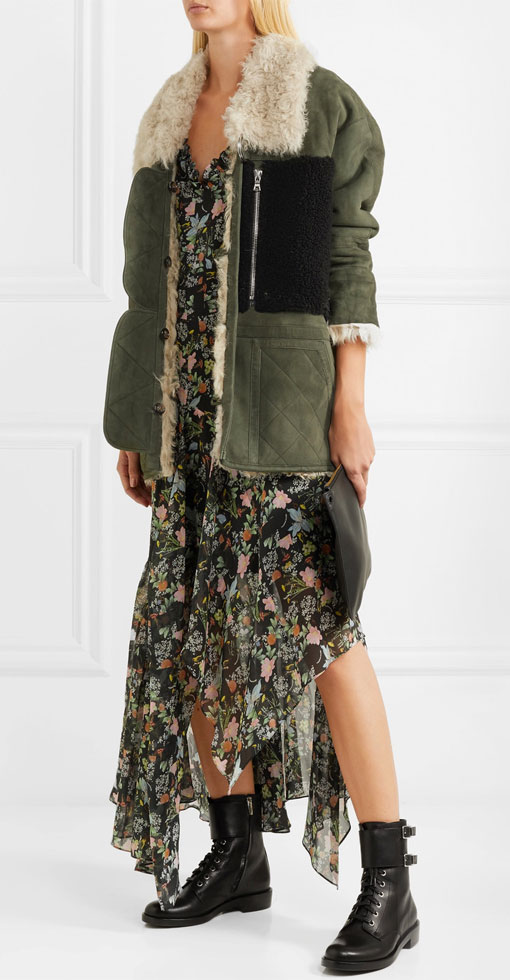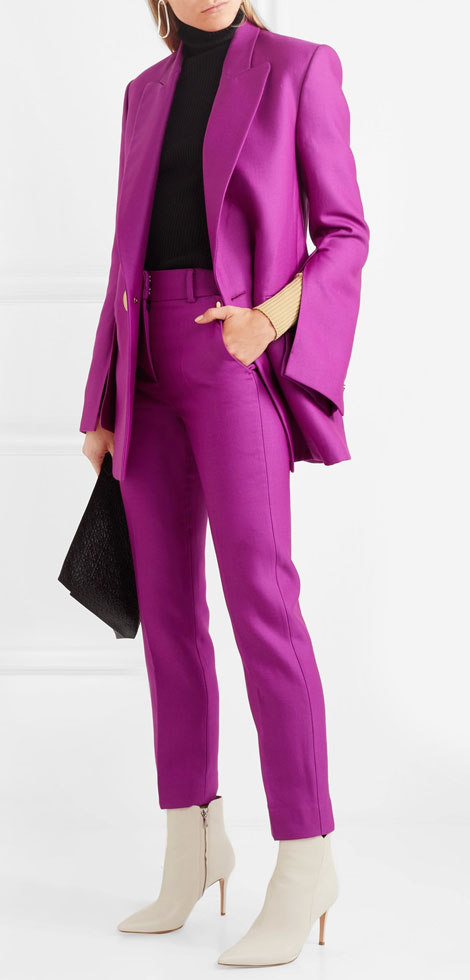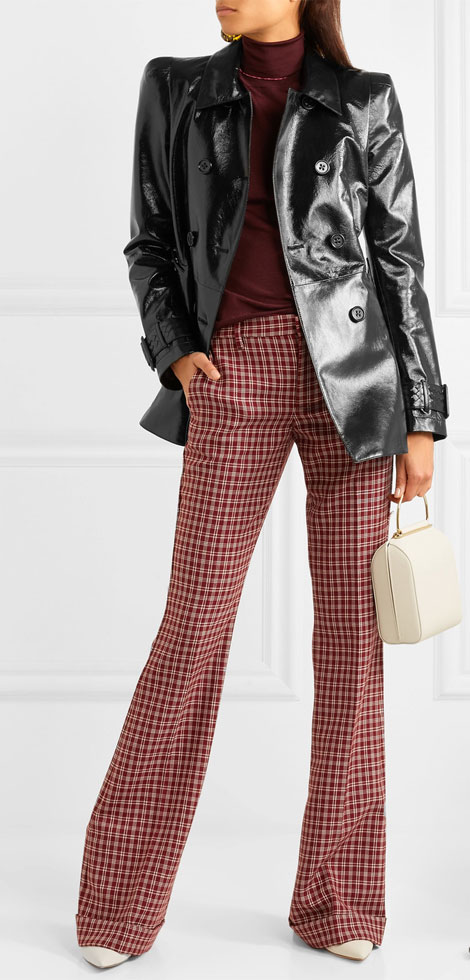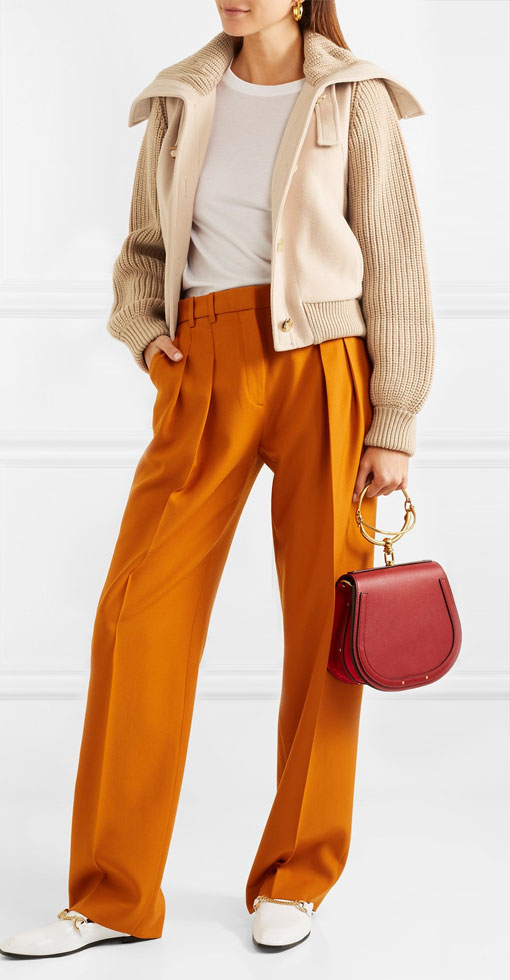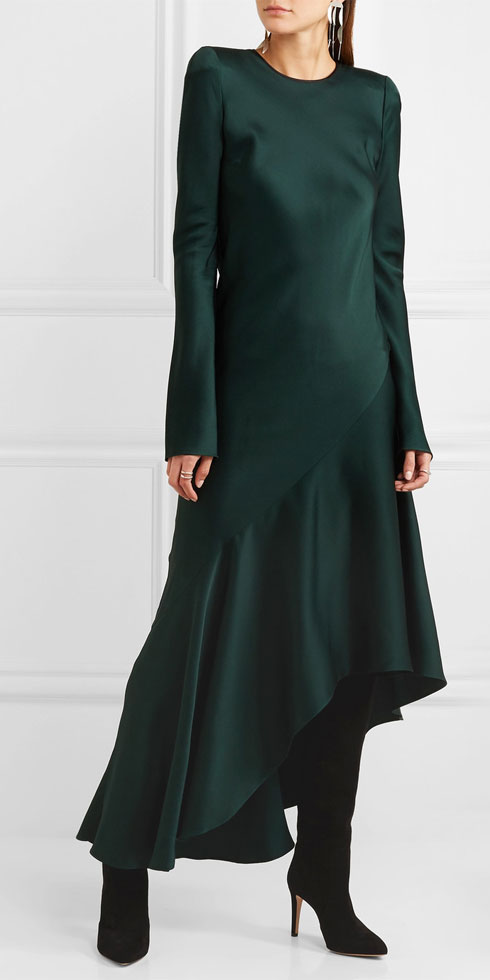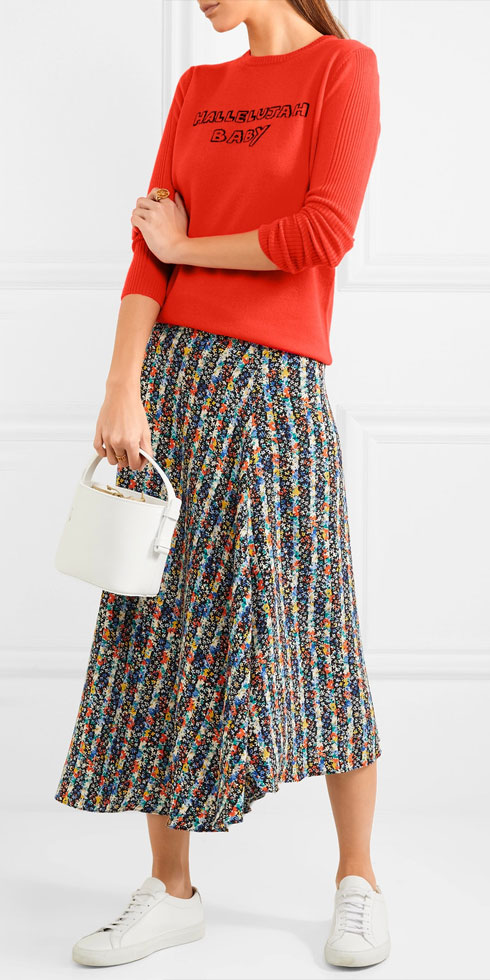I’ve worked through most of the Ready-to-Wear shows for Fall 2017, pinning directional looks along the way. There was quite a lot of fashion coming down the runway that I did not like, which is unusual. Overwhelming silhouettes, hectic slouch and extended sleeves look tired to my eye, as do deliberately unkempt models, and seasonally confused outfits that remix sandals with Winter woollies. That said, I’m pleased to see that Maximalism and Individualism reign supreme. Fads are a thing of the past, and fashion is more diverse than ever.
My favourite collections were: Bally, Brunello Cucinelli, Daks, J.Crew, Sandro, Tibi, Theory, Tracy Reese, Victoria Beckham, and Vetements (for model diversity).
Five things stood out as I browsed the shows:
- Absence of Athleisure
- Absence of grey
- Ample fluidity
- Outfit creativity
- Trend diversity
On to the trends.
1. Individualism
Fashion has become a melting pot of sartorial choices, and there is no one way to be stylish. Increasing diversity in fashion with each passing year means that there is something for everyone. Take the PERSONAL in personal style to heart, because you have the power to pick and choose from the trend buffet, and sport it your way.
2. Maximalism
Maximalism means wearing it all together to create a harmonized whole. Think of wearing complex silhouettes, combining them in one outfit, layering all sorts of pieces to create interesting proportions, accessorizing to your limit, pattern mixing, texture mixing, patchwork, embellishment, remixing high-contrast colours and clashing colours, wearing statement make-up, and adding nail polish and rainbow hair. Think drama, not subtlety.
Remember that Maximalism runs on a continuum, and you’re free to interpret it as fully as you see it on the catwalks, or tone things down considerably to create a minimally maximal look. Have fun exploring new possibilities and by all means “wear the kitchen sink” if that makes you happy. The only limit to the Maximalism trend is your own tolerance for it.
3. Tall Boots
As far as “hot off the press” trends go, booties are taking a back seat. There were MANY styles of tall boots on the runways, and most collections showcased them. Dressy and casual knee-high lengths in an assortment of colours and neutrals were ubiquitous, and combined with dresses, skirts, cropped pants, skinnies and straight legs. This was the biggest change in runway fashion, and quite a welcome one, despite the fact that tall boots are harder to fit than booties.
4. Full-Length Trousers & Jeans
The cropped pants trend — which has held strong for five seasons — now has major competition as full-length jeans and trousers make a comeback. And I mean floor-scraping lengths with lots of scrunch. Silhouettes were predominantly wide leg and bootcut, which is impractical for Winter. But scrunched tapered legs were equally popular.
The full-length, tailored straight leg with scrunch on the hem is my pick for new trouser and jeans silhouette. Easy to combine in outfits, good with an assortment of footwear, and practical in dodgy weather.
5. Dresses & Skirts
There were a plethora of dresses and skirts on the runways, many of which were midi length styled with tall boots. Most of the fabrics were soft and drapey, and the silhouettes fluid, semi-structured or tailored. Dresses and skirts were layered with all sorts of cardigans, jackets, coats and scarves, and some worn over pants. Let’s hope that knee-covering dresses with sleeves that are not poolside maxis make it to retail this season.
6. Earth Tones
You’ll see most colours represented on the runways, but some are simply more popular than others. This time round, earth tones are having their moment. Think shades or toffee, cinnamon, burgundy, bordeaux, cream, brown, forest green, sage green, mustard, olive, khaki, tan, chartreuse, shades of orange, animal print, and dirty shades of blue. Jewel tones like peacock teals and purples were popular too.
7. Sneakers
As I’ve mentioned before, sneakers and sneaker hybrids are the shoes of our fashion era. Fashion sneakers are combined with just about any outfit these days, and there is no stopping the trend on the catwalks.
8. Waist Definition With Belting
There was an incredible amount of waist definition coming down the runway. AGAIN. For the most part it was created by belts that cinched at the waist, as opposed to garment tailoring with seam and dart detailing. That said, there were just as many tailored coats and jackets, as there were cocoon and oversized silhouettes. If waist definition is not your thing, allow garments to hint at a waistline for a bit of structure. I hope that retail takes this trend to heart because there is only so much slouch that we can take. I vote bring back the tailoring.
9. Modern Retro
Modern Retro means that you’re incorporating a style, trend or design from a bygone era AND adding a good dose of modern to the look. Retro items are not vintage items that actually come from that era.
ANY retro look is on trend at this point, especially if the silhouettes resemble the ‘60s, ‘70s, ‘80s and ‘90s. The catwalks are full of design detailing from these fashion eras, which I personally enjoy seeing. Mod styles, Mary Janes and tapered ankle pants from the ‘60s. Boho chic, ruffles, flares, disco, faux fur, and glam looks from the ‘70s. Sharp shoulders, oversized tops, colour blocking, lace, high waistlines, shuffle socks, skinnies, pleated pants and waist definition from the ‘80s. Longer length blazers, coats and dresses, military boots, body-con tops, round specs and deconstructed denim from the ‘90s.
10. Renaissance
Think velvet, brocade, lace and jacquard across all wardrobe items, and wear them together for maximal effect. Feel free to wear a corset too. The dandy style of the New Romantics in the ‘80s is great inspiration.
11. Pantsuits
Almost all collections included pantsuits in some way. Some of them were beautifully tailored, looking elegant and feminine. Others were slouchy, edgy and Tomboy. Some had sharp ‘80s shoulders with long blazers. Others had short jackets. Lots of colours, patterns and fabrics were represented. The trend could come in handy for dressy attire when you don’t feel like wearing a dress or skirt. Or if you want to simplify your workwear options.
12. English Countryside
This included all sorts of earthy tweeds and plaids in separates likes blazers, skirts, waistcoats and trousers. Also: suede elbow patches, body warmers, corduroy bottoms, cravats, anoraks, pullovers worn over shirts and blouses, and riding boots worn over skinnies. Think dressy or casual equestrian, and you’re good to go.
13. Gothic Romance
Head-to-toe black with LOTS of texture and garment interest is strong. Interpret this trend in a maximal way for a fresh approach. For example, remix black wool, faux fur, lace, brocade and leather in one outfit.
14. Flats, Low Heels and ALL Toe Shapes
Designers made a statement with dressy and casual flat footwear (in which I include heels up to the height of an inch.) ALL toe shapes are popular. Pointy, square, round, snip toe, and round square toe boxes were shown. ALL heel shapes are making a fashionable appearance. Stilettos, platforms, block heels, stacked heels, wedges and kitten heels. Dainty and refined footwear is as trendy as chunky silhouettes. These days, it’s hard to find a dated style of footwear, although you should pander to your sartorial preferences and look for something “new-for-you” if shoes are your thing.
15. ALL Rise Lengths
This trend goes hand in hand with Modern Retro since I saw it ALL on the catwalks. Lots of high waistlines from the ‘60s and ‘80s. Lots of low and mid rises from the ‘70s and ‘90s. Lots of bottoms had ample width in the legs. Some were tailored at the hip and flared at the hem, while others were straight and skinny. Some styles had Tomboy slouch.
Before you process the trends, remember that:
- There is no such thing as a dated colour if you wear it with panache. Your colours are always in style.
- It takes years for runway trends to have an impact on retail, which means that fashion does not change overnight.
- Some trends do not make an impact on retail at all, or stay fringe at best.
- Mainstream trends last between 5 to 15 years. Some longer. Some vibes never go out of style, but a current version of the look in modern fabric is important. Vintage items can work when they’re combined with a good dose of Modern.
- Consumers keep trends alive, not designers and fashion houses. Retailers will continue to stock a trend if they know they can sell it. For example, designers might want to call it quits on the Athleisure trend, but the look makes a fortune for retailers who are in business to make a profit. They won’t stop supplying a look if you keep on buying it. Athleisure is a very popular way of dressing casually in America and Canada, and it will not disappear from retail.
Personally, I’m excited about maximalism, individualism, tall boots, full-length bottoms, some earth tones, English Countryside, Modern Retro, low block heels, and if we actually get them at retail – midi dresses.
Filter through the trends. Keep the ones that tickle your fancy on your radar and leave the rest. Don’t stop rocking your signature looks, but DO try something new. The “personal” in personal style means styling the trends your way, which is the best part in all of this. Feel refreshed and empowered as the new season unfolds.
